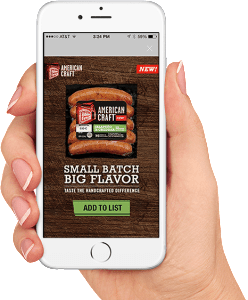Over a decade ago, trade journals were talking about smart grocery carts. These grocery carts would have a computer attached to it that could assist consumers in shopping by providing coupons, the location of an item the shopper wants to buy, and even an accelerated check out process if the shopper scanned the items into the cart. Meanwhile, the smart cart would allow the retailer to generate detailed data on their shoppers buying behavior, details of how customers moved through the store, and other useful information that could be used to increase store sales.
For the purpose of segmenting shoppers, grocery is the ideal retail vertical. We are almost all prodigious consumers of grocery items. A year’s worth of shopping data can lead to intelligent segmentations of customers. In contrast, most of us buy cars or washing machines only rarely. A year’s worth of data would be meaningless.
Smart carts were experimented with by various grocery chains, but have never come into general usage. Perhaps computers in carts was never realistic in an industry with such thin margins.
But the increased prevalence of smart phone usage gives retailers an opportunity to develop smart phone applets that do all the same things that smart carts were supposed to make possible. According to Digitas’ Connected Commerce, 92 million adult Americans use smartphone apps while shopping in store.
The in-store applet receiving the most attention was developed by inMarket. For retailers, the functionality supports shopping lists, loyalty-driven offers, and the promise of increased strategic marketing budget from consumer goods companies. Brand owners have done pilots where they have experienced 300 percent purchase intent lift when this technology is used to promote an offer as a shopper rolls their cart toward that SKU in an aisle.
Marketing folks, of course, are intrigued. But what the marketing department promises, the supply chain has to deliver, or at least try to deliver. In this article I want to explore that issue.
First, promotions need to be linked to shopper segmentation buckets. With a year’s worth of data, a retail chain should understand whether a shopper is on a budget and even calculate the spending limit of the budget. They can understand which shoppers are on a diet, either permanently or temporarily. Brand loyalty can be calculated.
The combination of more targeted promotions and contextual inventory data offers intriguing possibilities. The result could be that for a smaller expenditure of money, a consumer good’s marketing department achieves their goals at a lower total supply chain cost. Let’s say a brand owner of salsa has excess inventory in a particular region. Traditionally, this excess inventory sat in a warehouse, took up space, and negatively impacted working capital. Or, the consumer goods company might offer an ad hoc trade promotion; a discount that would apply to all shoppers at particular stores. This is the shotgun approach to clearing inventory.
With smart in-store applications the inventory can be cleared, while the marketing department achieves better bang for their trade promotion spend. Let’s say in addition to clearing inventory the marketing department also wants to convert 5000 shoppers to their brand. The retailer would be able to provide good data on how many shoppers at the stores in that region buy their brand versus competing brands. Perhaps there are 10,000 shoppers that buy competing brands. But 25 percent of those shoppers are brand loyalists, it would take big discounts to pry them loose.
Another 25 percent will readily buy the cheapest salsa. But their buying history indicates that they will not become brand loyalists. They will continue to buy whatever is cheapest. It makes no sense to target them.
Finally, there may be 20 percent of the shoppers who are on a budget and their shopping history indicates they only occasionally buy salsa. And finally there are the budget shoppers. They need to be approached thoughtfully to insure that the sale does not cannibalize the sales of other items in the store. Out of those 10,000 shoppers, perhaps only 3000 should be targeted.
Historically, promotions often caused real pain to the supply chain organization. Improved sales and operations planning processes has helped to fix that. Now better segmentation data creates the possibility of better demand planning at the store level; thus brand owners would be less likely to end up in excess inventory positions in the first place. Secondly, when excess inventory situations do arise, there will be better ways to rectify the situation.
Recently, omni-channel has been all the rage. But for grocery chains and the brand owners that supply them, the demand driven supply chain for traditional in-store shopping may continue to offer the larger opportunity.


















Leave a Reply